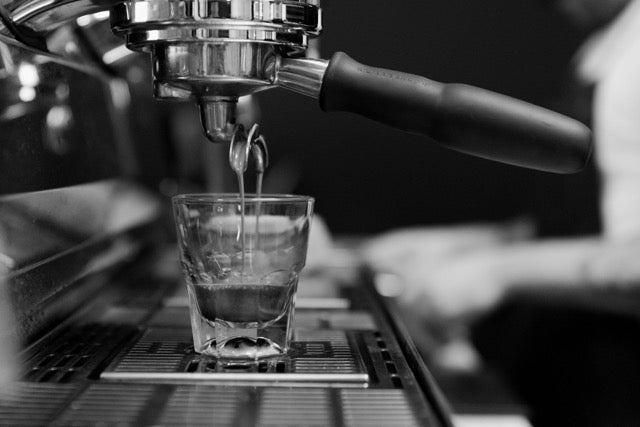French Press vs. Pour Over - Home Brew Methods

As home brewing has grown from a weekend hobby into a daily ritual, one debate seems to surface again and again: French press or pour-over? Both methods have loyal followings and long histories. Both can make an exceptional cup. But they thrive on different strengths, and understanding those differences helps you choose the method that matches your taste, your routine, and the way you want your coffee to feel.
This guide breaks down the essentials of each technique and explores the flavors, equipment, and rituals that make them distinct. Whether you’re refining your morning routine or stepping deeper into specialty coffee, knowing how these different brew methods will help you refind your daily process.
French Press
The French press has been part of coffee culture for nearly a century. First patented in 1929 and refined again in the 1950s, its design hasn’t needed much improvement since. A simple glass carafe, a metal plunger, and a mesh filter are all it takes to transform freshly ground coffee and hot water into a rich, full-bodied brew.
Brewing with a French press is straightforward. Coarse coffee grounds steep directly in hot water for a few minutes before the plunger is pressed to separate the grounds. Because the metal filter allows oils and fine particles to remain in the cup, the resulting brew is rounded, bold, and textured. It’s a style that celebrates depth rather than delicacy.
This method is especially well-suited to blends and single origins with chocolate, caramel, nutty, or dried fruit notes. Coffees from Brazil, Colombia, and Guatemala often shine here. The French press excels at highlighting body and sweetness, making it a favorite for those who prefer a comforting, robust brew.
Its simplicity is also its limitation. Over-steeping is common, which can lead to bitterness, and the mesh filter requires thorough cleaning to avoid trapped grounds. But with a timer, a consistent grind, and a bit of care, the French press rewards you with a cup that feels warm, generous, and deeply satisfying.

Pour-over
The pour-over is a different kind of ritual that is precise, meditative, and designed to reveal a coffee’s finer details. While manual drip brewing has existed for more than a century, it was Japan’s embrace of the method in the mid-20th century that refined it into the form we know today. Tools like the Hario V60 and Kalita Wave were engineered to control flow rate and extraction, giving brewers a new level of clarity and expression.
Pour-over brewing centers on control. Freshly ground coffee sits in a paper filter inside a cone-shaped dripper. Hot water is poured slowly and deliberately over the bed of grounds, extracting flavor in stages rather than all at once. The paper filter removes oils and sediment, creating a cleaner, brighter cup with more pronounced acidity and aromatic nuance.
This is why pour-over is synonymous with specialty coffee. It highlights origin character with notes of citrus and florals from Ethiopia, stone fruit from Colombia, spice from Rwanda, sweetness from Central America. With small adjustments in grind size, pour speed, or water temperature, you can emphasize different qualities of a single origin and explore how terroir shapes flavor.
The method is hands-on, and it takes a little more time and attention than a French press. But for those who enjoy the process as much as the cup, pour-over offers unmatched precision and reward.
Conclusion - French Press vs. Pour Over
Both brewers have earned their place on the kitchen counter, and neither is objectively better it simply depends on the experience you want. The French press delivers a fuller-bodied cup with richness and weight. The pour-over offers a clean, refined profile that brings clarity to complex coffees.
If you value ease and enjoy bold flavors, the French press is an everyday companion. If you’re drawn to nuance and want to taste the subtleties of single-origin coffees, the pour-over gives you the control to explore them.
In the end, the best method is the one that aligns with your palate and your ritual. Try both. Compare them. Pay attention to how each coffee changes with each brewer. That exploration is one of the most rewarding parts of making coffee at home and it always leads you to a better cup.













